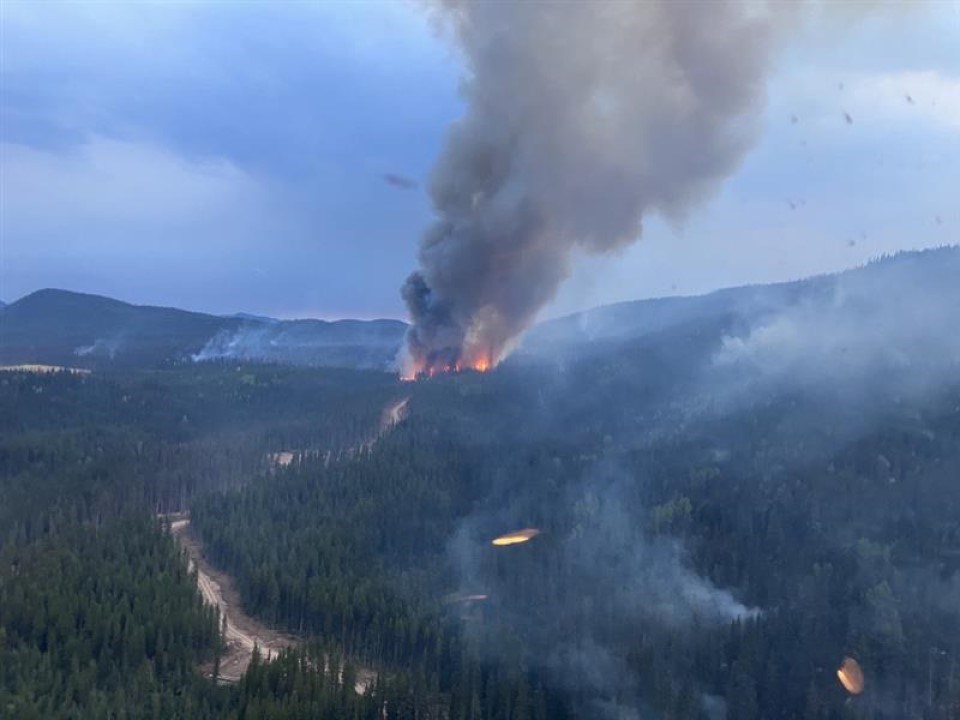Canada is in the midst of a tragic fire season: five firefighters have lost their lives, there have been countless other close calls, more than 200,000 people have been evacuated from their homes and communities, and over 17 million hectares have burned with massive quantities of greenhouse gases emitted into Earth’s atmosphere. Climate scientists warn that this situation will be repeated in the future with even worse outcomes possible.
Is this problem too large to solve?
Can we do anything to reduce the scale and severity of these wildfires?
There are many who suggest that large-scale investments in fuel reduction, including the use of prescribed fire, would be a waste of money and time. Senior bureaucrats and politicians who are hesitant to change funding priorities will use these opinions to justify not doing anything to mitigate this crisis and instead spend hundreds of millions of dollars each year on fire suppression and post-fire recovery.
This is an opinion not borne out by the facts. The weight of scientific evidence is in favour of large-scale mitigation efforts on the landscape. Large-scale restoration of beneficial fire and changes to forest management practices can mitigate the size and severity of highly damaging wildfires. That is not up for debate — we are basing our decisions on sound science and not media sound bites and opinion.
Landscape-scale fire behaviour and fire effects research conducted by fire scientists reveals the solution: landscapes that are maintained by frequent fire and contain patchworks of different ages, structure, and vegetation types are much less predisposed to large, high severity fires than landscapes that are highly continuous and stocked with dense forests and understory fuels.
Meadows, riparian zones, recently burned patches, patches that have burned repeatedly, hardwood forests — these are all features that can stop or slow fires. These recent scientific findings support millennia of Indigenous cultural burning activities across the landscape. By using fire at the right time in the right ways, we can reduce the amount of vegetation that's there to burn during the wrong times — hot, dry, windy days.
Fire weather — temperature, humidity, windspeed and direction — exerts a significant influence over fire behaviour, while climate change can influence seasonal and longer-term trends in fuel availability (how much fuel is dry enough to burn at any one time), and patterns of hot, dry weather (how hot and for how long). It can also contribute to more ignitions (more lightning). But if the fuels aren’t there in large quantities and contiguous across the landscape, it doesn’t matter how hot and dry it gets; you won’t have large areas burned and at high severity.
To illustrate the value of mitigation at scale, we can look to a recent example from southeast B.C. In April, the ?aq’am community and City of Cranbrook teamed up with the BC Wildfire Service and local contractors to conduct a prescribed burn on 1,300 hectares of reserve and city land. The burn objectives were infrastructure protection (homes, businesses, the airport, and a major powerline) and ecosystem health.
In late July, a wildfire ran up against the recent burn area and stopped — the burn had prevented the loss of homes and the Canadian Rockies International Airport (CRIA). Critically, the CRIA houses an air tanker base that remained operational throughout the event and prevented the further loss of homes and whole communities. Sadly, the ?aq’am community still lost seven homes.
At 1,320 hectares, the prescribed burns conducted this spring weren’t enough — that is where the discussion needs to be centred, not on whether or not to do the treatments, but how much area needs to be treated in order to have an impact on the kind of fires we are seeing today and will see in the future.
The belief that climate change will render all landscape interventions fruitless means that disadvantaged communities will continue to be disproportionately affected by smoke, direct fire damage, the trauma of repeated evacuations and for Indigenous communities — the ability to carry out their cultural activities on their territories.
It means the loss of the timber industry, degradation of watersheds and loss of water security for 70% of B.C.’s municipalities, loss of the tourism industry, hundreds to thousands of premature deaths due to smoke exposure, escalating insurance costs, and on and on.
It is critically important to have an informed debate about how best to respond to climate change and wildfires — large quantities of public and private money is at stake. But that debate needs to be centred on actively addressing the problem, not on whether or not to do anything at all.
To create and maintain this new landscape pattern will require large-scale public and private investment, policy changes, and much more. Simply walking away from the problem isn’t an option. And spending more money on firefighting won’t save us. As much as bureaucrats and politicians may not want to invest in mitigation at this scale, opting out means resigning us to worsening wildfire seasons.
Robert Gray is an independent consultant and wildfire ecologist with more than three decades of experience in B.C.




